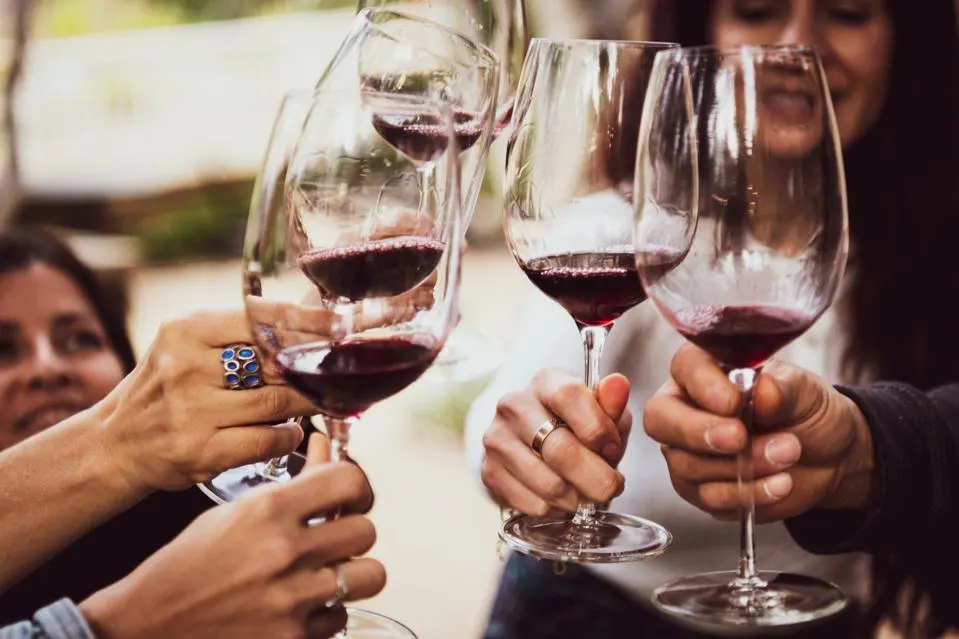
Wine Pairing Mastery: Elevate Dining with Perfect Matches
What's in This Article
Wine pairing is an art that transforms a simple meal into a memorable dining experience. By understanding the nuances of wine pairing, you can elevate your culinary adventures and create moments of pure gastronomic delight. This guide will explore the essentials of pairing red wines and white wines with various dishes, enhancing flavors and textures in ways you might not have imagined possible.
We'll delve into the intricacies of wine tasting, offering tips on selecting wines from different regions like the Okanagan Valley and exploring how vintages affect pairing decisions. Discover how to host a wine tasting party that impresses your guests with a thoughtfully curated selection of wines and complementary hors d'oeuvres that bring out the best in each glass.
Learn about the crucial role of palate cleansers and how sharing interesting facts about each wine's origin and characteristics can transform a simple gathering into an educational adventure. Join us as we embark on a journey to master the art of wine pairing, ensuring every meal becomes an opportunity to create lasting memories around the table.
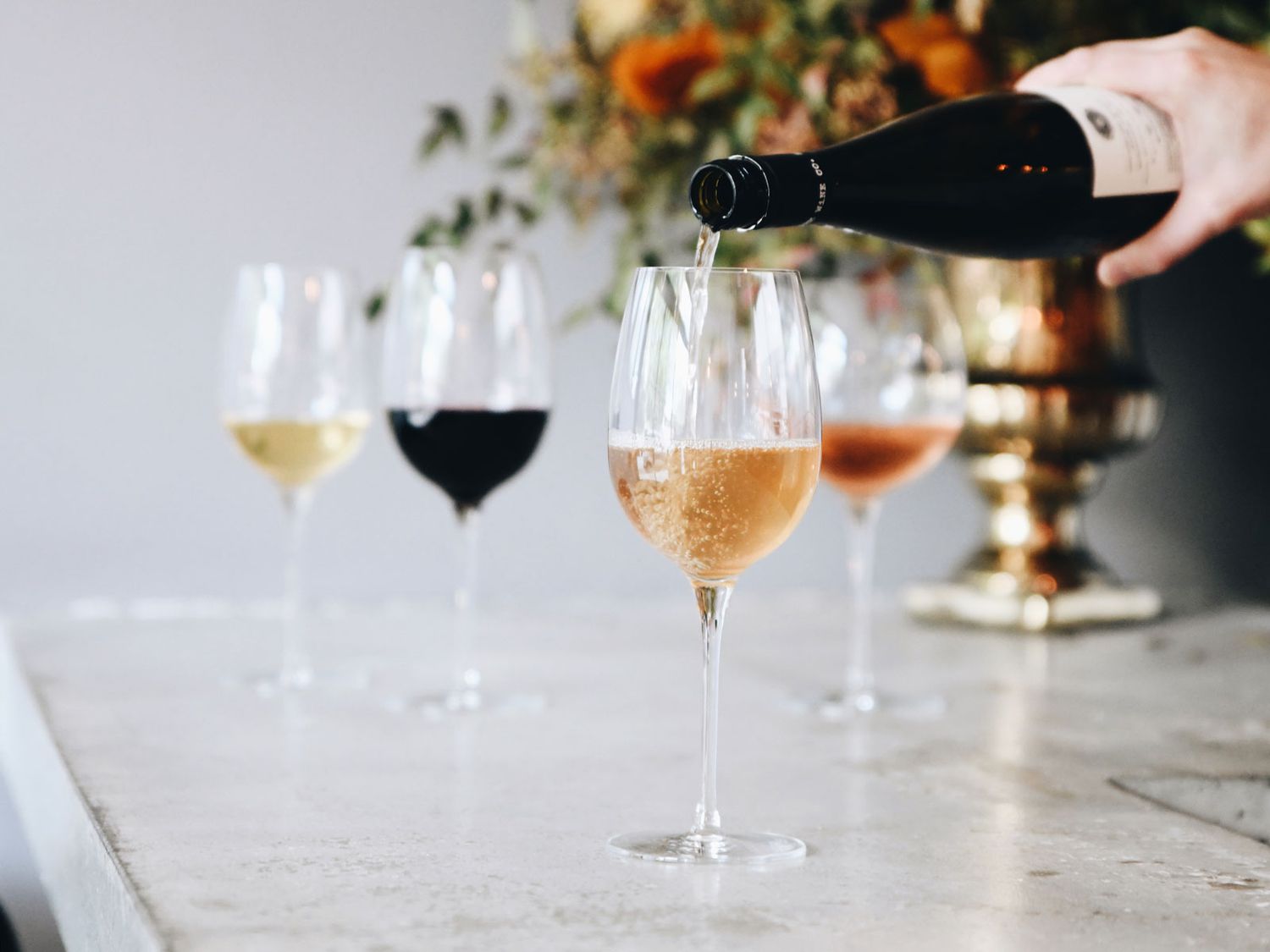
The art of wine pairing transforms ordinary meals into extraordinary dining experiences
Understanding Wine Pairing Basics
Wine pairing is more than just matching a wine with a dish; it's about creating harmony between flavors and textures that elevate both the food and the wine. The primary goal is to enhance the dining experience by complementing the food's taste profile with the wine's unique characteristics, creating a symphony of flavors that dance on your palate.
Understanding the basics of wine pairing involves recognizing the crucial role of acidity, sweetness, and tannins in wines. These elements interact with the flavors of the food, either enhancing or diminishing them in ways that can transform your meal. For instance, the bright acidity in white wines can brilliantly cut through and brighten the flavors of a dish, while the structured tannins in red wines can balance the richness of a hearty meal, creating perfect equilibrium.
When dining at establishments like Tzin Wine & Tapas, you'll notice how expertly crafted pairings can elevate even simple dishes to extraordinary heights. By mastering these fundamental principles, you can create dining experiences at home that rival those of fine restaurants, impressing guests and delighting your own palate.
The Role of Acidity and Sweetness
Acidity and sweetness are crucial components in successful wine pairing that can make or break your dining experience. Acidity in wine acts as a refreshing palate cleanser, cutting through rich and fatty foods with precision, making it an excellent match for dishes like creamy pasta, buttery seafood, or fatty fish.
Sweetness, on the other hand, can beautifully balance spicy or salty foods, providing a pleasing contrast that enhances the overall flavor profile and prevents any single element from overwhelming the palate. When pairing wines, carefully consider the acidity and sweetness levels of both the wine and the dish to create harmonious combinations.
A high-acid wine like Sauvignon Blanc pairs wonderfully with tangy dishes or foods with citrus elements, while a slightly sweet wine like Riesling complements spicy Asian cuisine by tempering the heat. At venues like Caribou Restaurant & Wine Bar, sommeliers expertly balance these elements to create unforgettable dining experiences. Understanding these fundamental elements allows you to create pairings that transform ordinary meals into extraordinary culinary adventures.
Tannins and Texture in Wine Pairing
Tannins are complex compounds found primarily in red wines that contribute significantly to their structure, mouthfeel, and aging potential. They interact with proteins and fats in food, making tannic wines ideal for pairing with rich, hearty dishes where they can work their magic. For example, a boldly tannic wine like Cabernet Sauvignon pairs beautifully with a juicy steak, as the tannins soften the meat's texture and enhance its flavors while the fat in the meat softens the wine's astringency.
When considering texture in wine pairing, think holistically about the weight and body of both the wine and the dish to create balanced combinations. A full-bodied, robust wine naturally pairs well with a rich, heavy dish, creating a satisfying experience, while a light-bodied wine complements a delicate, light meal without overwhelming its subtle flavors.
Restaurants like Frasca Food and Wine excel at creating textural harmony between their dishes and wine selections. By understanding the nuanced role of tannins and texture in wine pairing, you can create sophisticated combinations that demonstrate a refined palate and elevate everyday dining to special occasions.
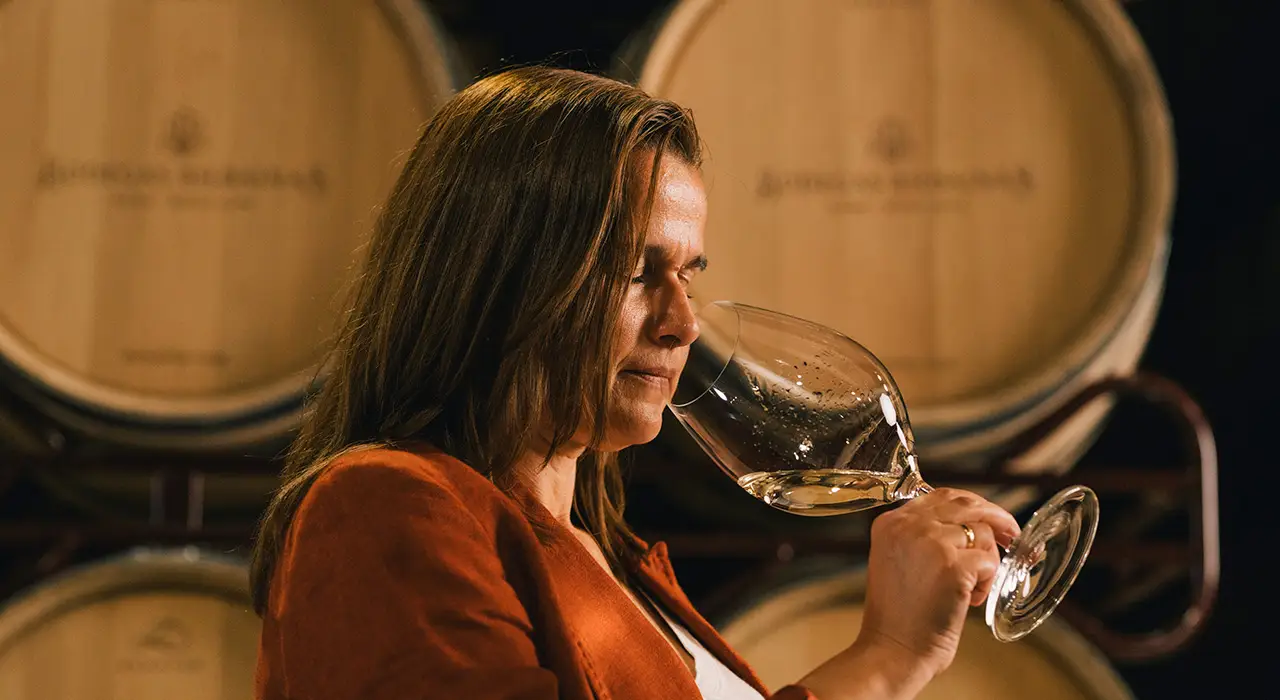
Understanding wine characteristics is fundamental to creating perfect pairings
Pairing White Wines with Food
White wines are celebrated for their remarkable versatility and ability to pair beautifully with a wide range of dishes, making them essential components in any wine pairing arsenal. Their typically higher acidity and lighter body make them ideal companions for lighter fare such as delicate seafood, poultry, fresh salads, and vegetarian dishes.
When selecting a white wine for pairing, consider the specific flavor profile and intensity of the dish you're serving. A crisp, refreshing Pinot Grigio pairs wonderfully with a fresh summer salad or light appetizer, while a rich, oak-aged Chardonnay complements a creamy pasta dish or roasted chicken with herbs. The key to successful white wine pairing lies in thoughtfully balancing the wine's acidity with the flavors of the food.
Restaurants like Barcelona Wine Bar offer exceptional white wine pairing experiences that demonstrate these principles in action. By understanding the characteristics of different white wine varieties and how they interact with various foods, you can create harmonious dining experiences that enhance both the wine and the dish, delighting even the most discerning palates.
Seafood and White Wine Pairings
Seafood and white wine create one of gastronomy's most perfect partnerships, with the wine's bright acidity and mineral qualities complementing the delicate flavors of the sea. A light, crisp wine like Sauvignon Blanc pairs beautifully with fresh shellfish and light fish dishes, bringing out their subtle sweetness, while a fuller-bodied wine like Viognier wonderfully complements richer seafood preparations like lobster with butter sauce or crab cakes.
When pairing white wine with seafood, it's essential to consider not just the type of seafood but also the preparation method and accompanying sauces. A wine with high acidity can masterfully cut through the richness of a buttery sauce or creamy chowder, while a wine with a hint of sweetness can perfectly balance a spicy seafood dish or one with citrus accents.
The wine list at Blue Morel Restaurant and Wine Bar showcases excellent seafood and white wine pairings worth exploring. By understanding these nuanced relationships, you can create sophisticated seafood and wine combinations that highlight the best qualities of both elements, transforming a simple seafood dinner into a memorable culinary event.
Poultry and White Wine Pairings
Poultry dishes offer a fascinating canvas for white wine pairings, with options ranging from delicate, light preparations to rich, flavorful creations. The key to successful pairing lies in matching the wine's body and flavor intensity with the preparation style of the poultry. A light, aromatic wine like Riesling pairs exquisitely with simply roasted chicken, enhancing its natural flavors without overwhelming them.
A fuller-bodied white wine like a well-aged Chardonnay complements richer poultry dishes such as chicken in cream sauce or turkey with all the traditional fixings. When selecting a wine, carefully consider the spices, herbs, and sauces used in the dish. A wine with a touch of sweetness beautifully balances spicy flavors in dishes like Thai chicken curry, while a wine with high acidity cuts through rich, creamy sauces in dishes like chicken alfredo.
By applying these principles, you can create sophisticated poultry and white wine pairings that impress guests and elevate everyday meals. The harmony between a perfectly prepared poultry dish and its ideal white wine companion creates a dining experience greater than the sum of its parts, demonstrating the magic that happens when food and wine are thoughtfully matched.

White wines like Sauvignon Blanc perfectly complement delicate seafood flavors
Pairing Red Wines with Food
Red wines stand out for their bold, complex flavors and remarkable ability to pair with hearty, robust dishes. Their tannins, full body, and rich fruit profiles make them perfect companions for red meats, game, rich sauces, and dishes with earthy or umami flavors. When selecting a red wine for your meal, consider the intensity and richness of the dish to ensure balance.
A powerful, structured wine like Cabernet Sauvignon creates magic when paired with a perfectly cooked steak, while a more elegant, lighter-bodied wine like Pinot Noir beautifully complements roasted duck or mushroom-based dishes. The key to successful red wine pairing lies in thoughtfully balancing the wine's tannins and intensity with the richness and flavor profile of the food.
Exploring the perfect red wine pairings can transform your understanding of how these wines interact with food. By mastering the art of red wine pairing, you create dining experiences that highlight the best qualities of both the wine and the dish, creating memorable meals that linger in the memory long after the last bite.
Red Meat and Red Wine Pairings
Red meat and red wine create one of gastronomy's most celebrated partnerships, with the wine's tannins beautifully complementing the richness and protein structure of the meat. A full-bodied, robust wine like Malbec pairs exceptionally well with a perfectly grilled steak, creating a harmonious balance as the tannins in the wine soften when they bind with the meat's proteins.
A medium-bodied wine like Merlot complements a roasted lamb dish wonderfully, its fruit-forward profile enhancing the meat's natural flavors without overwhelming them. When pairing red wine with red meat, it's worth considering the specific cut, preparation method, and accompanying sauces. A wine with firm tannins works wonders with fattier cuts like ribeye, while a more elegant wine with softer tannins pairs beautifully with leaner cuts like filet mignon.
A wine with subtle spice notes can elevate a dish with herbs or pepper crust, while a wine with a hint of fruitiness balances a spicy or BBQ sauce. By understanding these intricate relationships, you can create sophisticated meat and wine combinations that bring out the best in both elements, turning a simple steak dinner into a culinary adventure worth savoring.
Rich Sauces and Red Wine Pairings
Rich sauces and red wine create a culinary partnership that exemplifies the magic of thoughtful food and wine pairing. The wine's structure, tannins, and acidity masterfully cut through the richness of the sauce, creating a balanced and harmonious dining experience. A bold, spicy wine like Syrah pairs brilliantly with a rich, tomato-based sauce in dishes like osso buco or braised short ribs, the wine's complexity matching the depth of the slow-cooked sauce.
A more elegant wine like Grenache complements a creamy mushroom sauce beautifully, its bright fruit notes providing contrast to the earthy richness. When pairing red wine with sauce-centered dishes, carefully consider the intensity and flavor profile of both elements. A wine with high acidity brings balance to a rich, creamy sauce in dishes like penne alla vodka, while a wine with subtle spice notes enhances a bold, flavorful sauce in dishes like beef bourguignon.
By mastering these principles, you can create sophisticated sauce and wine combinations that demonstrate culinary finesse and elevate even simple pasta dishes to restaurant-quality experiences. The right red wine can transform a sauce-based dish from satisfying to extraordinary, creating a memorable dining experience worth sharing with friends and family.
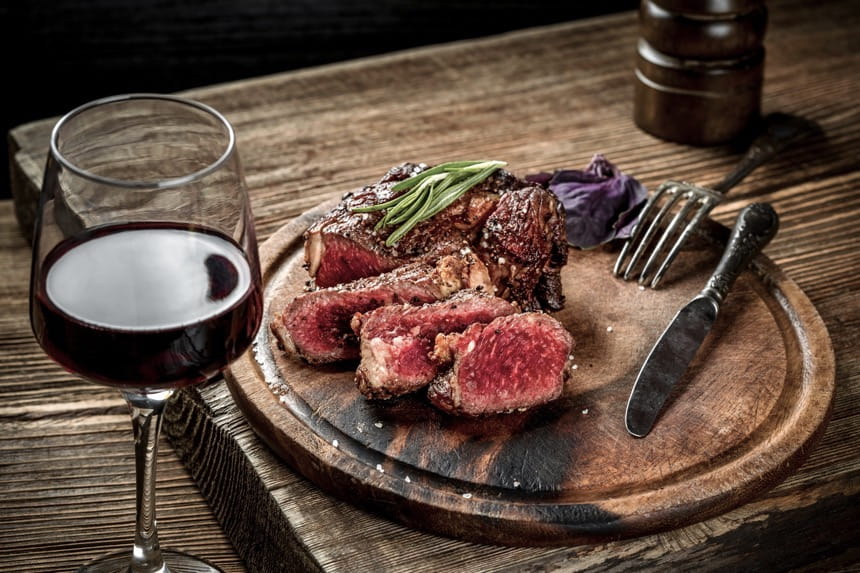
Bold red wines enhance the rich flavors of perfectly prepared red meats
Hosting a Wine Tasting Party
Hosting a wine tasting party offers a delightful way to explore different wines while enhancing your understanding of wine pairing in a social, interactive setting. To create a memorable experience for your guests, carefully select a variety of 4-6 wines connected by a thoughtful theme, such as wines from different regions like Okanagan Valley, different expressions of the same grape variety, or vintages of the same wine that show how aging affects flavor.
Serve the wines in a well-lit, comfortable space with neutral odors that won't interfere with the tasting experience, and provide quality palate cleansers like plain water crackers or neutral bread between tastings to reset the taste buds. To elevate the experience beyond simple tasting, offer a thoughtfully prepared selection of hors d'oeuvres or create a beautiful charcuterie platter with elements specifically chosen to complement your featured wines.
Engage your guests by sharing fascinating facts about each wine's origin, production methods, and unique characteristics, transforming the gathering into an interactive and educational experience that feels both sophisticated and approachable. A well-executed wine tasting party creates lasting memories while deepening everyone's appreciation for the art of wine pairing.
Selecting Wines for Tasting
When selecting wines for a tasting party, thoughtful curation makes all the difference between a good event and an exceptional one. Consider both the theme that will unite your selections and the varied preferences of your guests to create an engaging experience. A compelling theme might showcase wines from a specific region like Burgundy or Tuscany, explore different expressions of a single grape variety like Chardonnay from around the world, or compare different vintages to demonstrate how aging affects development.
For a truly educational experience, select wines that offer distinct flavor profiles and characteristics that provide clear contrasts and points of discussion. Include options ranging from light-bodied to full-bodied, dry to sweet, or young to aged, allowing guests to explore a spectrum of possibilities and discover new favorites outside their usual preferences.
Consider including at least one unexpected or unique selection that might surprise even knowledgeable guests, perhaps from an emerging wine region or featuring an uncommon grape variety. By thoughtfully selecting wines with purpose and variety, you create a tasting experience that is both enjoyable and educational, sparking conversation and deepening everyone's appreciation for the wonderful diversity of the wine world.
Enhancing the Tasting Experience
To create a truly memorable wine tasting experience, focus on creating an atmosphere that engages all the senses and encourages mindful appreciation. Set up a dedicated tasting area with proper glassware—ideally different shapes for different wine styles—and ensure good lighting so guests can properly observe color and clarity. Provide quality palate cleansers like unflavored water crackers, plain baguette slices, or mild cheese between tastings to reset the taste buds.
Prepare thoughtful educational materials to enhance the learning experience, such as tasting notes sheets, information cards about each wine's origin, grape variety, producer background, and suggested flavor profiles. These resources help guide novice tasters while providing talking points for more experienced wine enthusiasts. Encourage guests to take notes and discuss their impressions without judgment, creating an interactive atmosphere where everyone feels comfortable sharing their observations.
Consider offering a carefully selected array of food pairings that complement your chosen wines—perhaps a beautifully arranged charcuterie board with various cheeses, cured meats, olives, nuts, and dried fruits that highlight different aspects of each wine. These thoughtful details transform a simple tasting into a complete sensory experience that delights guests while deepening their understanding and appreciation of wine, creating an event they'll eagerly anticipate attending again.
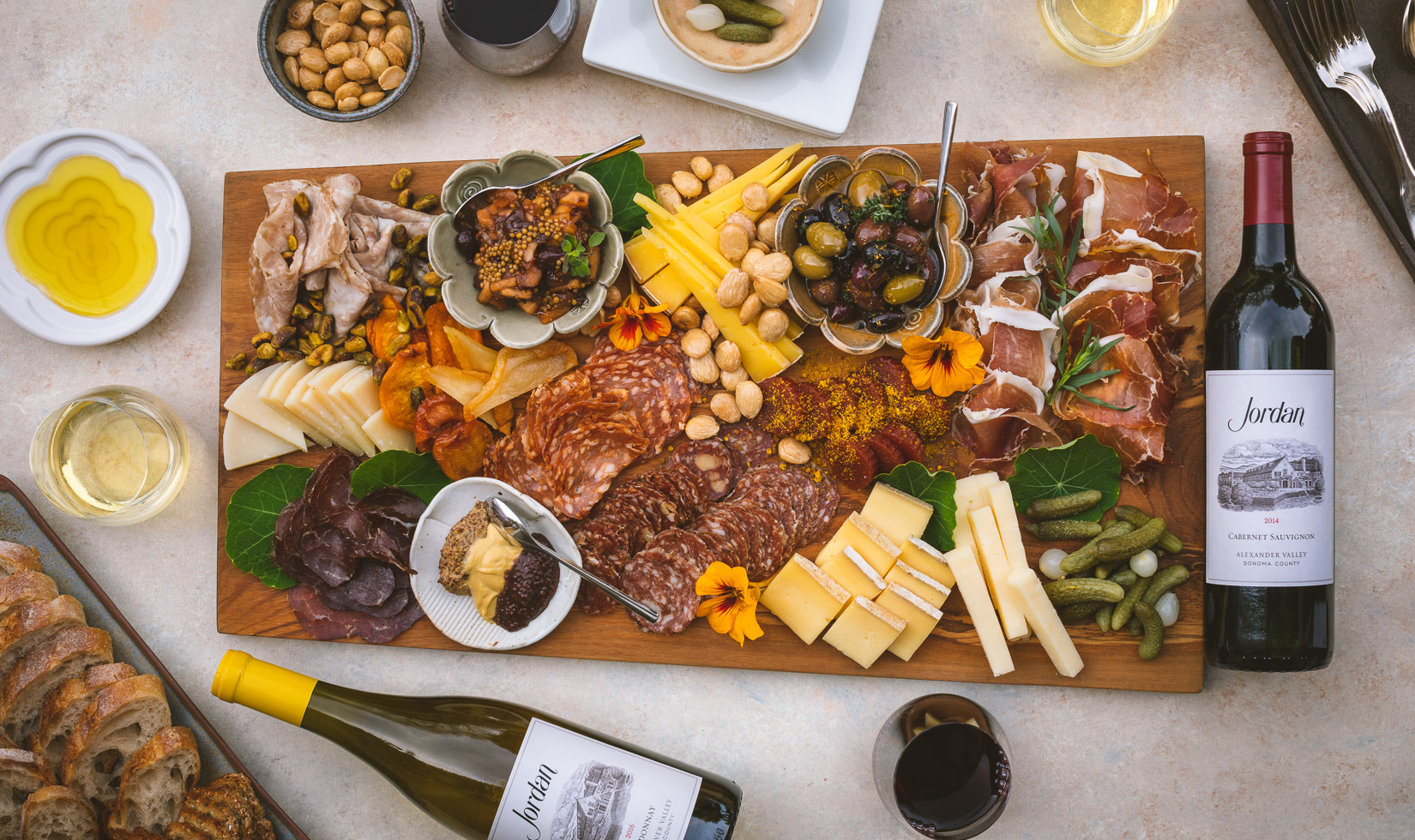
A well-planned wine tasting party offers guests an educational and flavorful experience
Conclusion
Mastering the art of wine pairing transforms ordinary meals into extraordinary dining experiences that delight the senses and create lasting memories. By understanding the fundamental principles of wine pairing—balancing acidity, sweetness, tannins, and texture—you can create harmonious combinations that enhance the flavors and nuances of both the wine and the food on your table.
Whether you're pairing a crisp white wine with delicate seafood or a bold red wine with a perfectly prepared steak, the key lies in thoughtful consideration of how flavors interact and complement each other. Restaurants like Frasca Food and Wine exemplify these principles in action, demonstrating how expertly matched pairings can elevate dining to an art form.
Hosting a wine tasting party offers a wonderful opportunity to explore different wines and deepen your understanding of wine pairing in a social, interactive setting. As you continue to experiment and learn, you'll discover new combinations that surprise and delight your palate, expanding your appreciation for the infinite possibilities that wine pairing offers. Embrace this culinary journey with curiosity and enthusiasm, knowing that each pairing brings you one step closer to wine pairing mastery.
Frequently Asked Questions
The most important factors to consider when pairing wine with food are balance, complementary flavors, and contrasting elements. You should match the weight and intensity of the wine with the food (light wines with delicate dishes, bold wines with rich foods). Consider the acidity, sweetness, and tannin levels in the wine and how they'll interact with your dish. Acidity in wine cuts through fatty or creamy dishes, while tannins in red wines complement protein-rich foods. Sweet wines balance spicy dishes, and wines with earthy notes pair well with similar flavors in food. Always consider the dominant flavors in your dish (is it herbal, spicy, fruity, etc.) and find wines with complementary characteristics.
When pairing wine with spicy food, opt for wines with lower alcohol content (under 13%), as high alcohol can intensify heat. Slightly sweet wines like off-dry Riesling or Gewürztraminer work wonderfully with spicy dishes because the residual sugar helps cool the palate and balance the heat. Avoid high-tannin red wines as they can make spicy food taste hotter and more bitter. Aromatic whites with good acidity provide refreshment between bites, while light-bodied, fruit-forward reds like Beaujolais or Pinot Noir can work well with moderately spicy meat dishes. For very spicy cuisine like Thai or Indian, sparkling wines like Prosecco offer both sweetness and palate-cleansing effervescence that pairs beautifully with the intense flavors.
For a versatile charcuterie board, consider serving a few different wine options to complement various elements. A medium-bodied red wine with good acidity such as Chianti, Sangiovese, or Côtes du Rhône pairs wonderfully with most cured meats, especially salami and prosciutto. For creamy, soft cheeses like Brie or Camembert, try a crisp, acidic white wine such as Sauvignon Blanc or unoaked Chardonnay. If your board features stronger, aged cheeses, a full-bodied red like Cabernet Sauvignon or aged Tempranillo makes an excellent match. For blue cheeses, consider a sweet wine like Port or Sauternes to contrast with the saltiness. Sparkling wines like Prosecco or Champagne work beautifully with the entire board thanks to their versatility and palate-cleansing bubbles.
When choosing wine for guests with unknown preferences, select versatile crowd-pleasers with broad appeal. Opt for medium-bodied wines that fall in the middle of the spectrum for characteristics like sweetness, acidity, and tannin. For white wines, unoaked or lightly oaked Chardonnay and Pinot Grigio are approachable options that pair well with many foods. For reds, Pinot Noir and Merlot offer softer tannins and pleasant fruit flavors that appeal to most palates. Rosé wines provide an excellent middle ground, especially for mixed groups. Consider serving a sparkling wine like Prosecco or Spanish Cava, as the effervescence and balanced flavor profile have nearly universal appeal. When possible, offer both a white and a red option to accommodate different preferences, and aim for quality wines in the middle price range rather than extremes.
To plan a progressive wine tasting with food pairings, arrange wines in a sequence from lightest to boldest, with complementary food matches for each stage. Begin with sparkling wine (like Champagne or Prosecco) paired with light appetizers such as oysters or small cheese puffs. Move to light-bodied white wines (Sauvignon Blanc or Pinot Grigio) served with seafood or light salads. Progress to fuller-bodied whites (Chardonnay) paired with richer dishes like creamy pasta or roasted chicken. Transition to light reds (Pinot Noir) accompanied by mushroom dishes or salmon. Continue with medium-bodied reds (Merlot or Sangiovese) paired with charcuterie or duck. Finish with bold reds (Cabernet Sauvignon or Syrah) matched with red meat or aged cheeses. For a grand finale, serve dessert wine with complementary sweets. Provide palate cleansers between courses, offer small portion sizes, and include water to keep guests refreshed throughout the experience.